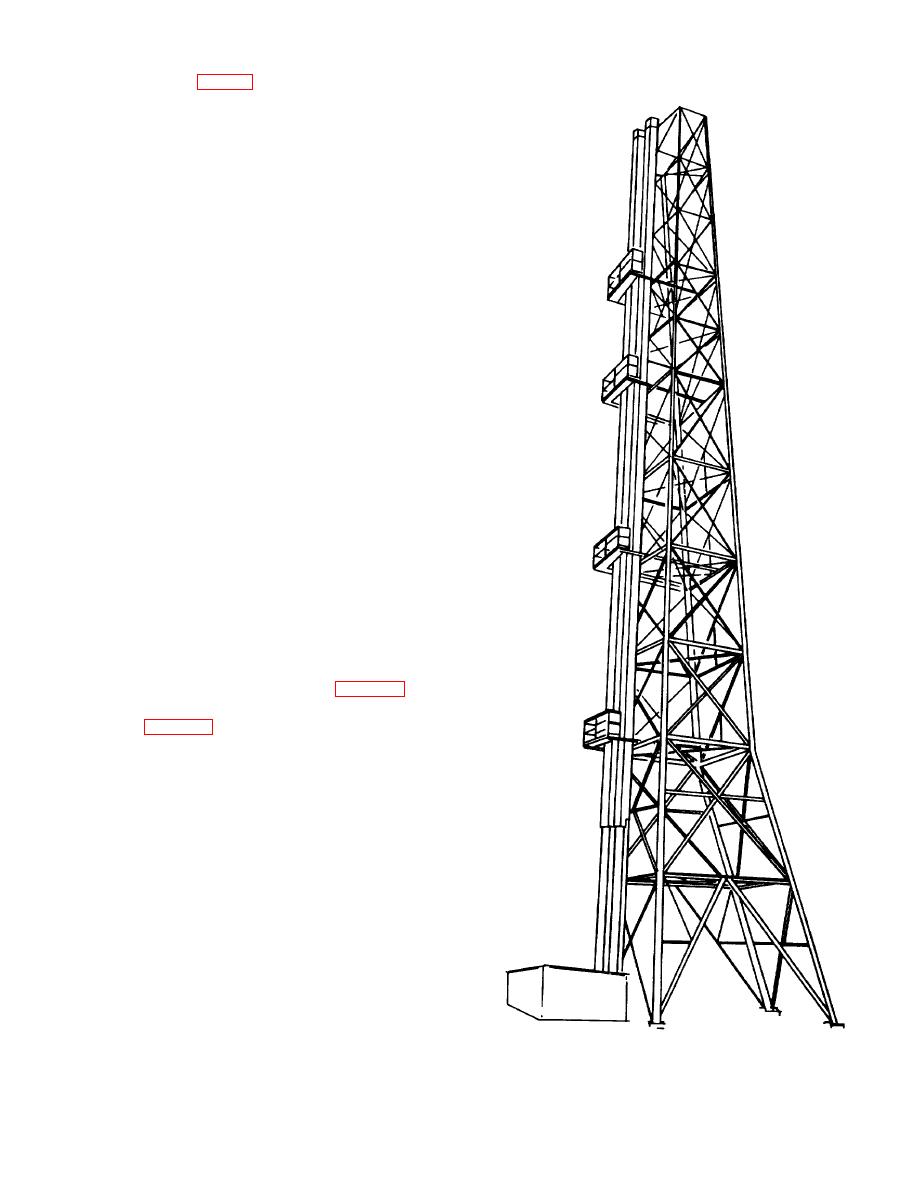
tower (fig. 95) uses a 150-foot vertical
track (comparable to a vertical lathe bed)
on which a carriage travels.
Three
carriages permit a weight range from 60
pounds to 1,200 pounds. One end of the
propellant actuated device is secured to
the base of the tower and the other end is
attached to the carriage.
When the
device strokes, it propels the carriage up
the track. At the 72-foot level, a pair of
brake shoes on the carriage contact rails
and decelerate the carriage. An endless
chain, running the length of the tower, is
normally held fixed but may be driven
upward or downward by an electric motor.
The sprocket on the carriage engages this
chain and by virtue of an included clutch,
may spins freely as the carriage ascends,
but it is prevented from spinning in the
opposite direction; therefore, when the
carriage has reached its maximum height,
it will be held there by the sprocket chain
combination. To lower the carriage, the
chain is driven in the downward direction,
permitting the carriage to fall as rapidly as
the chain descends to its starting place.
The chain may also be driven upward to
raise the carriage for adjusting the
propellant actuated device, under test.
(2) The instrumentation used in tests on the
vertical tower normally includes the
following: a stroke marker and an
accelerometer mounted on the carriage
with
a
quick-disconnect,
and
a
piezoelectric gage, load cell, and a
pressure pickup as shown in figure 96.
(3) Another type of vertical tower is shown in
section of 12-inch ID tubing, supported by
guy struts in two directions. The top of
the tube is capped. There is a large vent
hole at the 15-foot level, and the bottom is
open for installation of the catapult and
instrumentation. The catapult is installed
on a base at the bottom of the tower, and
a weighted piston (simulating the weight
of the canopy or ejection seat and man) is
lowered on the catapult. Upon firing, the
catapult drives the piston up the tube; the
catapult completes its stroke prior to the
tower piston passing the vent hole.
Figure 95. Vertical test tower.
106


